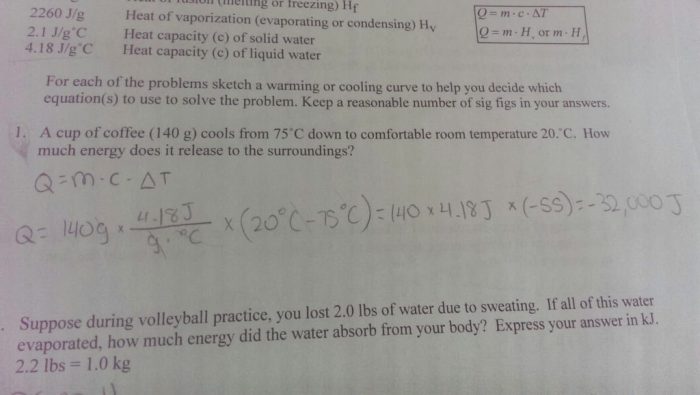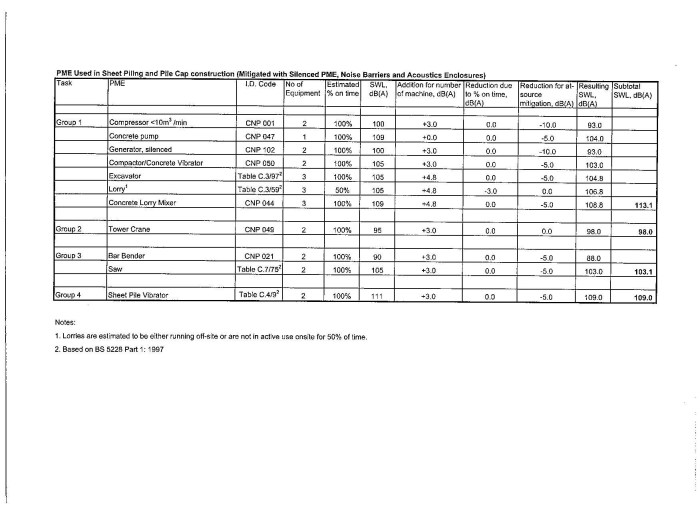Unit 3 worksheet 3 quantitative energy problems – Unit 3 Worksheet 3: Quantitative Energy Problems delves into the fascinating world of energy calculations, providing a comprehensive guide to understanding and solving these problems effectively. This engaging resource empowers learners to tackle real-world energy challenges with confidence.
Through a structured approach and practical examples, this guide explores the fundamental concepts of quantitative energy problems, equipping readers with the necessary knowledge and skills to excel in this domain.
Quantitative Energy Problems Overview
Quantitative energy problems involve the analysis and solution of problems related to energy transfer, conversion, and efficiency. They are crucial in various fields, including engineering, science, and everyday life. Solving these problems accurately enables us to optimize energy usage, design efficient systems, and make informed decisions.
Real-world applications of quantitative energy problems include:
- Calculating energy consumption in buildings and industrial processes
- Designing energy-efficient appliances and systems
- Optimizing fuel usage in transportation
- Evaluating the efficiency of renewable energy sources
- Forecasting energy demand and supply
Methods for Solving Quantitative Energy Problems
There are several methods for solving quantitative energy problems. Common methods include:
- Conservation of Energy:This method applies the principle that energy cannot be created or destroyed, only transferred or converted.
- Power Analysis:This method involves calculating the power consumed or generated by a system.
- Efficiency Analysis:This method determines the efficiency of a system by comparing its energy output to its input.
- Thermodynamics:This method uses the laws of thermodynamics to analyze energy transfer and conversion.
Each method involves specific steps and techniques for solving energy problems. The choice of method depends on the nature of the problem and the available information.
Common Energy Problem Types

Unit 3 Worksheet 3 covers various types of energy problems, including:
- Heat Transfer:Problems involving the transfer of heat between objects or systems.
- Work and Energy:Problems involving the conversion of energy between different forms, such as mechanical and electrical.
- Power:Problems involving the calculation of power consumption or generation.
- Efficiency:Problems involving the determination of the efficiency of energy-converting devices or systems.
- Renewable Energy:Problems involving the analysis and evaluation of renewable energy sources.
Units and Conversions

Using the correct units is essential in energy problems. Common energy units include:
| Unit | Symbol | Description |
|---|---|---|
| Joule | J | Unit of energy |
| Watt | W | Unit of power |
| Kilowatt-hour | kWh | Unit of energy consumption |
| British Thermal Unit | BTU | Unit of energy used in the US |
Conversions between units can be made using conversion factors. For example, 1 kWh = 3.6 MJ.
Problem-Solving Strategies
Effective problem-solving strategies for quantitative energy problems include:
- Understanding the Problem:Clearly understanding the problem statement and identifying the relevant information.
- Diagrams and Equations:Using diagrams and equations to represent the problem and its solution.
- Step-by-Step Approach:Breaking down the problem into smaller, manageable steps.
- Checking Units:Ensuring that the units in the solution are consistent and correct.
- Approximations and Assumptions:Making reasonable approximations and assumptions to simplify the problem without compromising accuracy.
Applications in Science and Engineering: Unit 3 Worksheet 3 Quantitative Energy Problems
Quantitative energy problems have wide applications in science and engineering. They are used in:
- Design and Optimization:Designing and optimizing energy-efficient systems, such as buildings, vehicles, and industrial processes.
- Energy Analysis:Evaluating the energy consumption and efficiency of systems to identify areas for improvement.
- Decision-Making:Making informed decisions about energy use, conservation, and investment in renewable energy.
- Research and Development:Developing new energy technologies and improving the efficiency of existing ones.
Questions Often Asked
What are quantitative energy problems?
Quantitative energy problems involve using mathematical calculations to determine the energy involved in various processes or systems.
Why is it important to solve quantitative energy problems accurately?
Accurate solutions to quantitative energy problems are crucial for optimizing energy efficiency, designing energy systems, and making informed decisions in energy-related fields.
What are the common types of energy problems encountered in Unit 3 Worksheet 3?
Unit 3 Worksheet 3 covers a range of energy problems, including calculating energy consumption, efficiency, power, and work.